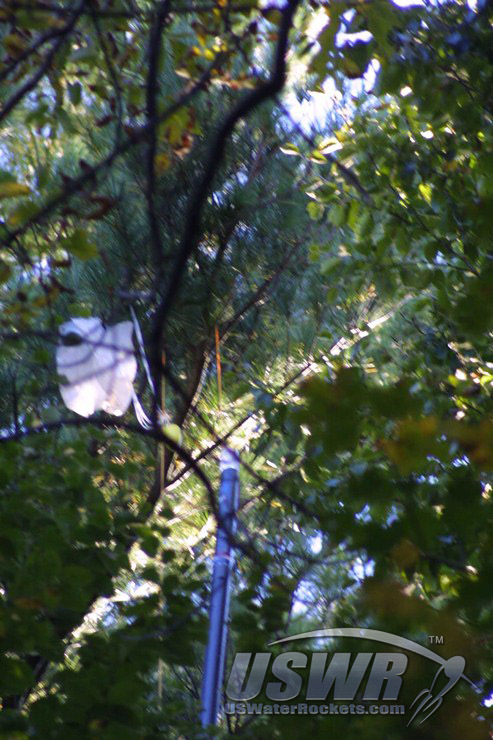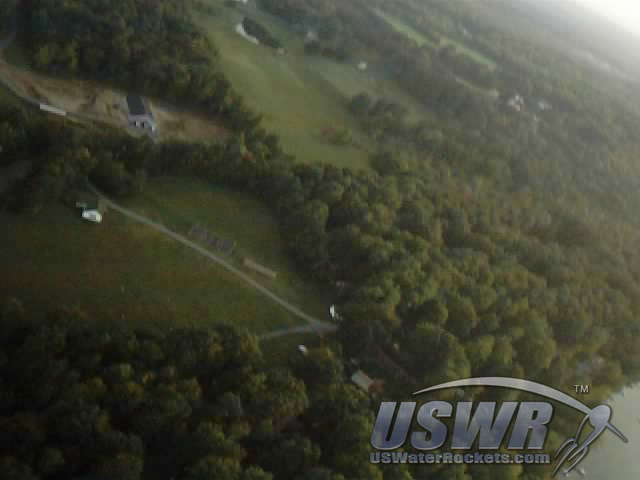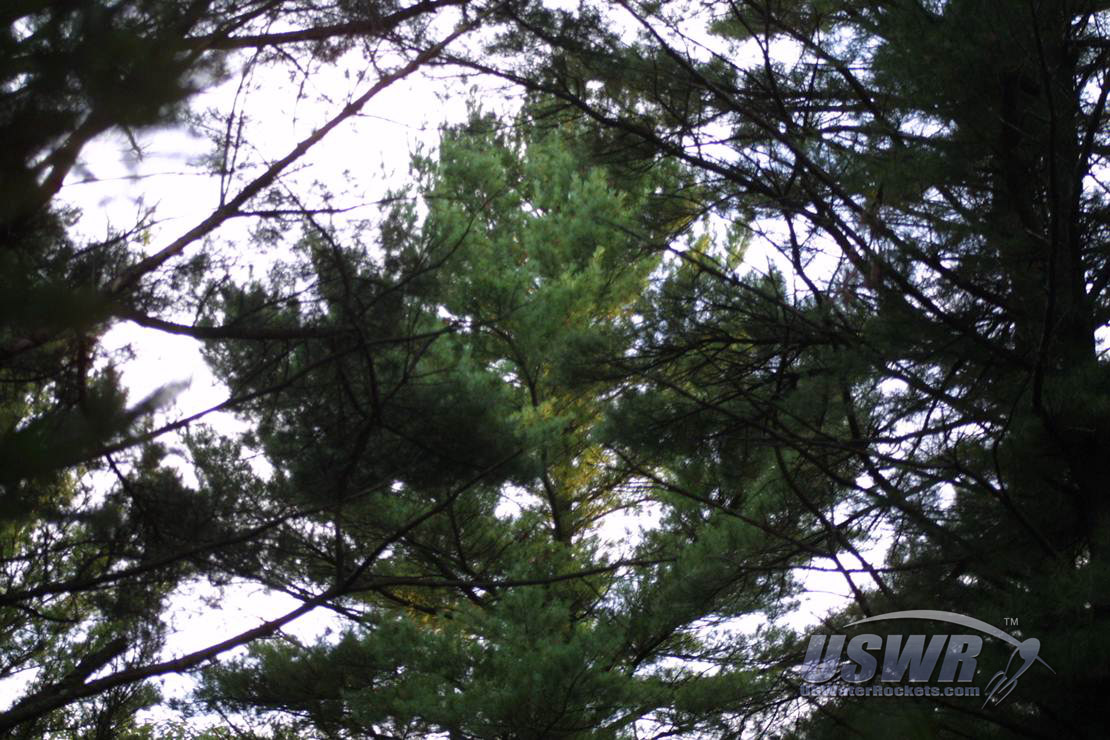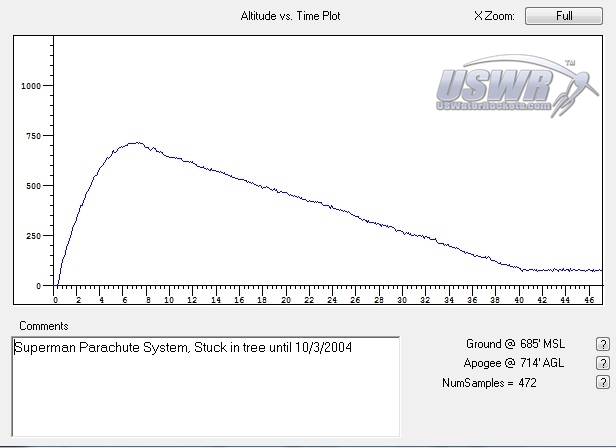X-10 World Record Setting Water Rocket Recovered after 3 week ordeal in tree.

On September 12, 2004, the day after setting a World Altitude Record for Water Rockets, the weather conditions were not ideal for another record attempt. Instead of risking a loss or crash, the designers at U.S. Water Rockets instead chose to perform a shakedown low altitude flight to test out a new parachute recovery system nicknamed the "Superman recovery".
The purpose of the test was to verify that the rocket descended in a horizontal position with the onboard Water Rocket Video Camera pointing towards the ground. This orientation differs from the existing vertical orientation in that the video images returned by the rocket would be primarily of objects on the ground, instead of distant objects on the horizon. The "superman" moniker was coined as a homage to the DC comics Superman character, who flies through the sky in a similar fashion, scanning the ground below for trouble. On this day, however, "Superman" was in trouble, and needed rescue, as the horizontal orientation provided by the horizontal flight put the rocket into a diagonal descent in an unpredicted direction, which carried it deep into a forested area near the U.S. Water Rockets Launch Pad. Search parties triangulated the landing area as closely as possible, but were unable to establish the exact landing point due to approaching darkness compounded by local fauna which began making mating calls at approximately the same frequency as the locator enunciator beacon onboard the lost rocket.
The next day, the batteries were too depleted and the audio locator would no longer function, so a visual search pattern was established. Over the course of the following weeks the search grid was meticulously searched until X-10 was spotted approximately 50 feet off the ground, firmly lodged in a pine tree. Efforts to throw a rescue line to the rocket were hampered by the dense vegetation. A helium filled rescue balloon was employed next, but it was not powerful enough to lift the rocket from it's perch.
Finally, U.S. Water Rockets Engineers devised a clever rescue grapple launcher device, which penetrated the thick foliage and allowed rescue workers to dislodge the rocket from it's perch. Unfortunately, it snagged on the branch of a silver birch tree and an electrical storm was approaching, so rescue operation were suspended.
After the storm had passed, rescue workers returned to the site to find the X-10 rocket had fallen to the ground during the storm, and had sustained some damage. The payload and electronics bay had been breached and had gotten wet from the rain. The pressure vessel appeared to be intact however.
The rocket was transported back to U.S. Water Rockets Labs, where repairs began, and the data from the test flight was recovered. The video from the flight plainly shows the unplanned course deviation and the eventual landing in the forest. Examination of the altitude data recorded by the onboard altimeters shows the low altitude test flight ended about 70 feet above the launch pad (the tree where the rocket landed is approximately 20 feet higher in elevation than the launch pad due to the topology of the area.
Flight Video:












